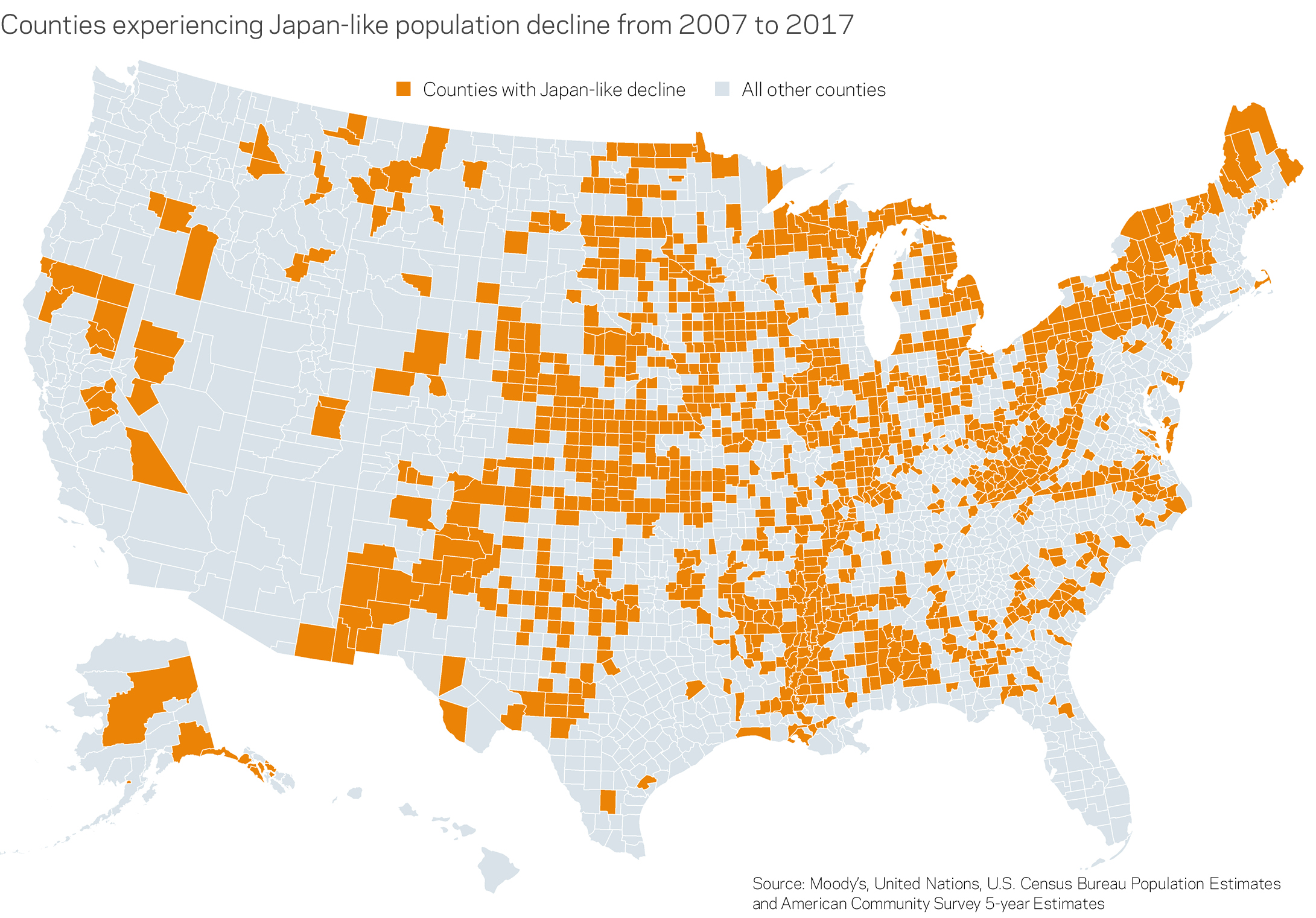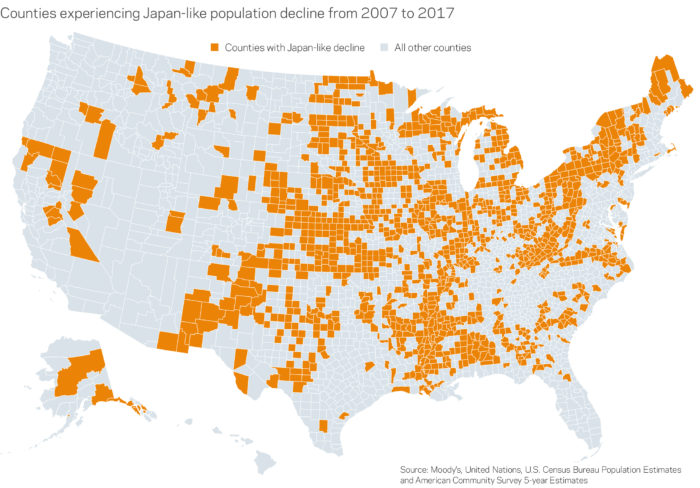Over the last decade, Japan’s population shrank by 1 percent and its prime working age (25-54) population shrank by 4.4 percent. Its average age is now 48. With birth rates declining across much of the developed world, economists and demographers look to Japan to catch a glimpse into the future. The country’s steep demographic decline threatens its long-term economic and fiscal prospects, although stop-gap measures have at least temporarily buoyed growth.
To many in the United States, such a population bust seems hard to imagine. Yet a serious demographic slowdown is underway. Total U.S. population grew by 7.8 percent from 2007 to 2017 and the country’s prime working age population saw a modest uptick of 0.9 percent in that time period. Annualized, those figures reflect the slowest population growth since the Great Depression. Low fertility rates, rapid aging, and widespread prime age population loss have set in across much of the map.
41% of U.S. counties experienced rates of total population and working age population loss as bad or worse than Japan from 2007 to 2017. Although many of these counties are sparsely populated, together they contain 38.7 million residents, close to the population of California. Over the last decade, these counties lost 1.7 million residents and 2.1 million working-age adults.
Demographic decline deters entrepreneurship and makes local economies less dynamic. It also depresses housing markets and undermines municipal finances. Policymakers need to consider a variety of ways to mitigate these consequences and empower communities to fight back. Solutions should include a more targeted immigration policy, policies that make it easier to start and support a family, and policies that connect businesses to talent and markets so they can grow.
 Learn more by visiting eig.org/heartland-visa
Learn more by visiting eig.org/heartland-visa







